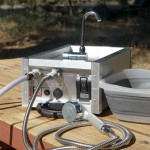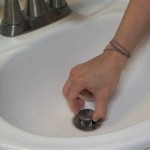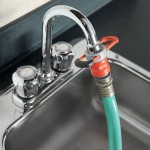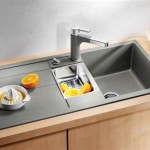Parts Of A Sink Plumbing
A sink is a plumbing fixture that is used for washing hands, dishes, and other objects. It is typically made of porcelain or stainless steel and is installed in a countertop or vanity. The sink has a basin, which is the part where water collects, and a drain, which allows water to flow out. The sink may also have a faucet, which is used to control the flow of water into the basin.
The plumbing of a sink is relatively simple. The water supply line is connected to the faucet, which then directs the water into the basin. The drain is connected to a waste pipe, which carries the water away from the sink. The waste pipe is then connected to the main drain line, which carries the water away from the building.
There are a few different types of sinks, each with its own unique features. Some of the most common types of sinks include:
- Kitchen sinks: Kitchen sinks are typically larger than other types of sinks and have multiple basins. They may also have a garbage disposal, which is used to grind up food waste.
- Bathroom sinks: Bathroom sinks are typically smaller than kitchen sinks and have a single basin. They may also have a soap dispenser or a toothbrush holder.
- Utility sinks: Utility sinks are typically used in laundry rooms or garages. They are larger than bathroom sinks and may have a deeper basin. They may also have a sprayer, which can be used to wash clothes or other items.
When choosing a sink, it is important to consider the following factors:
- The size of the sink: The size of the sink will depend on the size of the space in which it will be installed. It is important to choose a sink that is large enough to accommodate your needs, but not so large that it takes up too much space.
- The type of sink: The type of sink will depend on the intended use. Kitchen sinks are designed for food preparation and cleanup, while bathroom sinks are designed for personal hygiene. Utility sinks are designed for heavy-duty cleaning tasks.
- The material of the sink: The material of the sink will affect its durability and appearance. Porcelain sinks are durable and easy to clean, while stainless steel sinks are resistant to rust and corrosion.
- The price of the sink: The price of the sink will vary depending on the size, type, and material of the sink. It is important to set a budget before you begin shopping for a sink.
Once you have chosen a sink, it is important to install it properly. The installation process will vary depending on the type of sink and the countertop or vanity in which it will be installed. It is important to follow the manufacturer's instructions carefully to ensure that the sink is installed properly.
With proper care and maintenance, a sink can last for many years. It is important to clean the sink regularly to prevent the buildup of dirt and grime. It is also important to inspect the sink for any leaks or damage. If you find any leaks or damage, it is important to repair them promptly to prevent further damage.

Parts Of A Sink The Home

Parts Of A Sink The Home

20 Parts Of Bathroom Sink Drain

Plumbing How To Remove Rusted Remains Of Kitchen Sink Tailpiece Home Improvement Stack Exchange

Parts Of A Sink The Home

Bathroom Sink Plumbing

Hugedomains Com

Bathroom Sink Plumbing Installation Diy Montreal

How To Install A Pipe From Sink Drain Wall Ehow

Parts Of Hotsell A Sink







